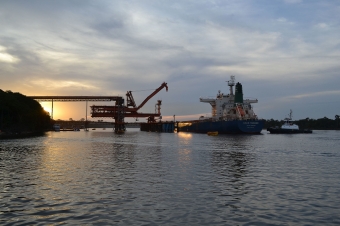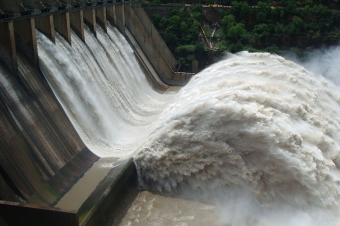Summary:
It is an activity that focuses on the handling of regulatory tools for IED protection. It is intended that students observe the points of convergence and divergence of each standard available, particularly with regards to the concept of "investment" and ways of protection. To this end, they discuss in class the contextualized legal instruments Petrobras-Bolivia case namely: national rules on Brazilian foreign investment (Law 4,131 / 62) and Bolivia (Ley 1182/90). This dynamic applies after the dynamic "Petrobras Case 1: International economic relations involving public and private actors."
Objective:
- GENERAL GOALS: to provide students with the opportunity to reflect on the difference in each country's regulations dealing with foreign direct investment protection (FDI). The intention is to lead students to reflect about the protection afforded under national law, FDI and the limits established by the state to the investor and the FDI capital flow, as a public policy instrument;
- SPECIFIC GOALS: to lead students to question, from a case, if bilateral investment agreements are the only arrangements capable of bringing security to foreign investments in another country and in the Brazilian case, if there are better arrangements, taking into account all the specifics of its development. Thus, they observe the differences between the laws involving the Petrobras-Bolivia case, making it difficult for Petrobras to solve its IED problem in Bolivia after the nationalization process in 2006;
- It is intended that students develop:
1) the capacity to handle different forms of investment regulation, whether national, international or private;
2) notice the difference in structure between international legal documents, extracting key concepts as "investment";
3) identify applicable law and define the regulation of investment;
4) assemble a more appropriate investment ratio for the part that will have their interests represented.
Dynamics:
- TEACHING METHOD: Problem-Based Learning (PBL), in which students should look for the most appropriate instruments to protect the investments of the interested party, based on a specific case (Petrobras investments in Bolivia).
- REQUIREMENTS: there was previous required reading. In the 2nd half of 2013, the required reading was, the publication of UNCTAD entitled "Scope and Definition: the sequel," pp. 5-19; Brazilian Law No.4,390/64; Bolivian Law No.1,182/90. The further reading was SORNARAJAH, The international law on foreign investment, pp. 8-18; and COSTA, J.A.F. International Law of Foreign Investment, 29-57;
- INTRODUCTION TO THE DYNAMICS: in the classroom, the Professor gave students a summary of the case Petrobras-Bolivia and made an opening of 15-20 minutes reading it aloud and making interventions to submit additional information inserted in a PowerPoint slides. After reading the case, the students received a hard copy of exercises to respond in the group (see attachment);
- DEVELOPMENT OF THE DYNAMICS: The students were divided into groups of 5 and had 40 minutes to read the documents (primarily investment contracts), responding in writing to questions proposed by the professor in accordance with the objectives of the exercise. In the 2nd half of 2013, it was required that the students wrote about the points of convergence and divergence of regulations in each country. The written answers were given by the end of the class;
- END OF THE DYNAMICS: in the final 40 minutes, the students and professor discussed the answers in a free dialogue (30 minutes) and the students could review them (10 minutes);
- ATTENTION IN THE CLASSROOM: some observations can be made from the experiences with the activity:
1) at other times, students of the 3rd year already had the specific case, addressed from another perspective, in terms of contracts with another professor, which allows students to know well the structure that expand and put into question concepts they thought were already consolidated;
2) the implementation of the exercise depended on the recovery of previously provided must read and context highlighting possible regulatory instruments to protect private investment, involving international agreements and national regulations;
3) early in the course of 2013, in which the exercise was applied again, there was a conversation to understand the profile of the group and outline what kind of dynamics works and the areas of interest of students. Alongside the role of professor in the broader education of the student, being a technical content, it is important to align the profile of the class, which, in this case, influenced both the option to focus more on the private side that the public as to the choice the base material. It was identified for example, the class of difficulty dealing with the schedule of activities outside the classroom, especially with large volume of material, which is why it was decided by goals texts (primary sources, primarily) and room for answers;
4) apply to the exercise, it is necessary to consider the limitations of foreign language students, as there are documents in English and Spanish;
5) to perform the exercise is necessary to have specific physical structure, that is, data show;
6) when working with a real case such as this, one has to be careful with the material students bring from the media, trying to deconstruct prejudices and make them see the other side of the case;
7) there is a possibility of the investment law of Bolivia be revised soon (ongoing project in 2013).
Evaluation:
- FEEDBACK: The comments to the development of the dynamics were made at the end of the class;
- GRADE EVALUATION: evaluation of all course’s exercises (there are about 11) made up 30% of the final grade. A single grade assigns to the whole group. The performance depended on exercises prior to reading the indicated material as mandatory for the class. The following criteria evaluates the exercise:
1) Interpretation and application of the concepts and legal rules;
2) Articulation of ideas and interests of those involved;
3) Rationale.
- 10% of the final grade was the evaluation of participation in the classroom, also measured in this dynamics. This evaluation item had not only counted on the active but also on the passive participation in the classroom. This means that participation evaluated was based on:
1) attention and concentration in the classroom (hear and understand the Professor and classmates);
2) read the indicated texts (especially when applied the Socratic Method);
3) teamwork, when applicable; and
4) contribution to the reasoning proposed by the Professor to the class (including the presentation of issues and correlation of ideas);
The statement of participation allowed the Professor to evaluate the student's progress in learning all the skills and competencies the discipline intended to develop in the student.
Observation:
Copyright from the cover page image:
Image: "Oil platform (Brazil) 1", 2009, provided by Wikimedia Commons user "Dantadd" photo "Archive Agency Brazil" under the Creative Commons BY 3.0 license





